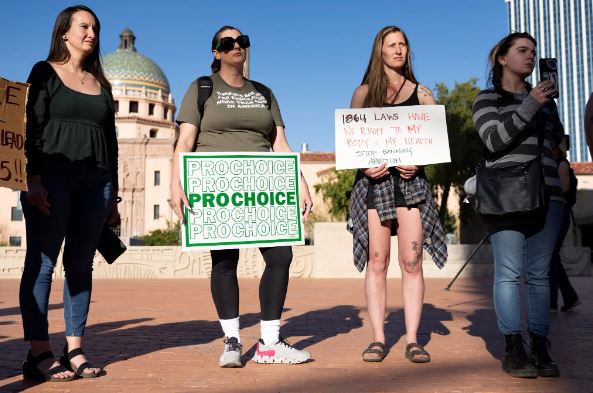Arizona’s recent court decision upholding a 160-year-old abortion ban has drawn attention to the historical backdrop of abortion laws in the United States, revealing a complex tapestry of social, medical, and political factors.
In the early years of the nation, abortion was generally legal until the point of fetal movement, known as quickening, which typically occurred well into the second trimester. This legal framework reflected the limited medical understanding of pregnancy and the absence of modern diagnostic tools. Prior to quickening, abortion was largely accepted and practiced, often through herbal remedies or crude surgical methods.
The practice of abortion was discreet but acknowledged, with providers offering their services under veiled terms in newspaper advertisements. However, with the rise of organized medicine in the mid-19th century, particularly the establishment of the American Medical Association (AMA), attitudes towards abortion began to shift. The AMA, composed entirely of white male physicians at the time, sought to assert professional dominance over midwives and non-physician practitioners, many of whom were women. Abortion became a focal point of this effort, as it was often provided by individuals outside the medical establishment.
Led by figures like Dr. Horatio Robinson Storer, the Physicians’ Crusade Against Abortion emerged in 1857, advocating for the criminalization of abortion and portraying it as both immoral and medically dangerous. Dr. Storer’s arguments, rooted in a moralistic and increasingly scientific discourse, gained traction as the medical understanding of embryology advanced. The assertion that life began at conception became a rallying cry, bolstered by the emerging eugenics movement and concerns about the reproductive habits of certain demographic groups.
The societal and cultural context of the late 19th century also played a significant role in shaping attitudes towards abortion. Rising concerns about race, immigration, and morality intersected with the push for abortion restrictions. Laws like the Comstock Act of 1873, which targeted not only abortion but also contraception and pornography, reflected a broader moral conservatism of the era.
By the 1880s, nearly 40 states had enacted laws banning abortion, with Arizona joining their ranks in 1864, shortly after becoming a territory. The law criminalized the provision of abortion except in cases where the mother’s life was at risk, establishing penalties for both providers and recipients of abortion services.
The recent court decision to uphold Arizona’s longstanding abortion ban has reignited debates over reproductive rights and the role of government in regulating healthcare. Critics argue that such laws impose outdated moral standards on a diverse and rapidly evolving society, while supporters frame them as necessary protections for the unborn.
In examining the historical roots of abortion laws, it becomes clear that they are deeply intertwined with broader social, medical, and political currents. Arizona’s ban, like many others across the country, reflects a complex interplay of medical professionalization, moral conservatism, and social prejudices that have shaped attitudes towards reproductive rights in the United States.

